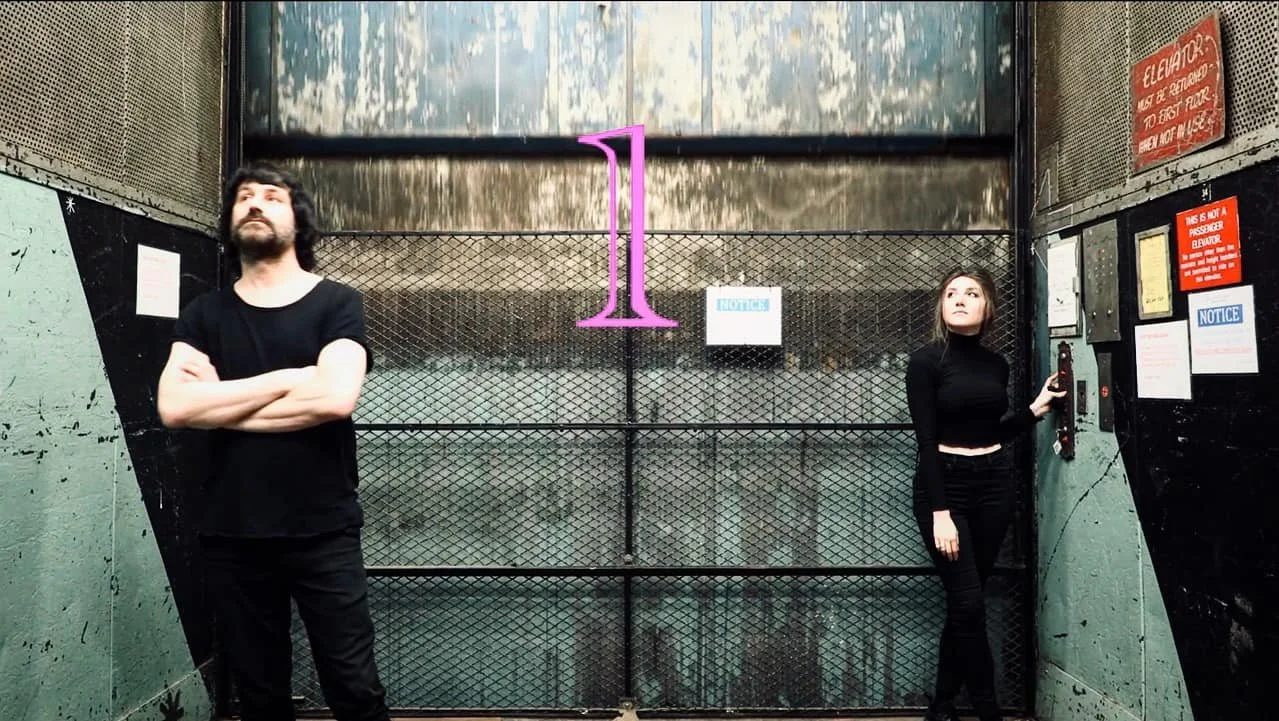Pretend It Is A Ritual
the setting:
This video piece is a co-designed sound-movement work with Julian Day. Set in and around the historic Columbia Computer Music Center, we interacted with sounds that were part of the building itself, converging the visual, sonic and physical.
the story:
The roles of composer, choreographer, performer, listener and observer are blurred between two bodies, two voices.
Initially, this work was envisioned solely in the cyber sphere, utilizing Zoom as a platform for sonic and somatic exploration. In the midst of our discussions and reflections, a few questions arose: what are the possibilities of these sonic and choreographic interactions over Zoom in the context of our geographic disjunction, and how can those interactions be “orchestrated?” We also asked ourselves how to compress the roles of protagonist(s), responder and observer, either in the same body or moving between bodies. Though the product (or first draft in a continuing project) was much different than we imagined at the outset, our areas of interest remained constants, namely blurring the boundaries between composer, choreographer, performer, listener and observer, and using video editing as a choreographic tool. We both established equal and fluid roles in creation and production of sound and movement. We also kept in mind fusing the boundaries of the body with voice and environment, and doing this via a series of game-like prompts.
Thinking about the growing importance of space and objects in our work, we gradually segued from online to in-person, from a group of people to us two. As both of us have spent much time in the CMC, we wanted to use this as our primary filming site, exploring all the rich sonic and choreographic material within the walls of this building we know so intimately yet have not explored in these ways. As we made this transition, the facets of Zoom we envisioned manipulating in the context of a group ended up translating to our in-person experience with each other. For example, the various ways in which you can view the boxes of people on Zoom became an aspect of the video editing, cycling between footage of ourselves in conversation and in our various filming locales. Also, our consideration of different forms of Zoom cues (aural vs. textual vs. visual) led us to consolidate to aural communication of instructions, whilst playing off of visual cues as we each moved and observed. The geographic disjunction we were going to play with in Zoom translated to how changes in setting influenced our tangible interfacing with them.
Considering our collective experience in radio, we began thinking about the vocal exchange of information between us in reflecting on this work, and recorded ourselves having an improvised 65-minute conversation doing just this, riding the waves of related topics and tangents that surfaced. We extracted segments from this as a common thread throughout the film, a stream-of- consciousness narration guiding and “orchestrating” our activities in the series of locations in and around the CMC. We devised prompts for each other to respond to in the sites, provoking us to think about the relationship between our bodies and surrounding environment both sonically and physically, and how those intertwine. Our bodies and actions disrupted and sculpted aspects of these places, considering negative space and a list of choreographic composition tools we actively referred to that inspired our prompts.
The title is extracted from lyrics to a poem by Leonard Cohen, called “You Have the Lovers.”
